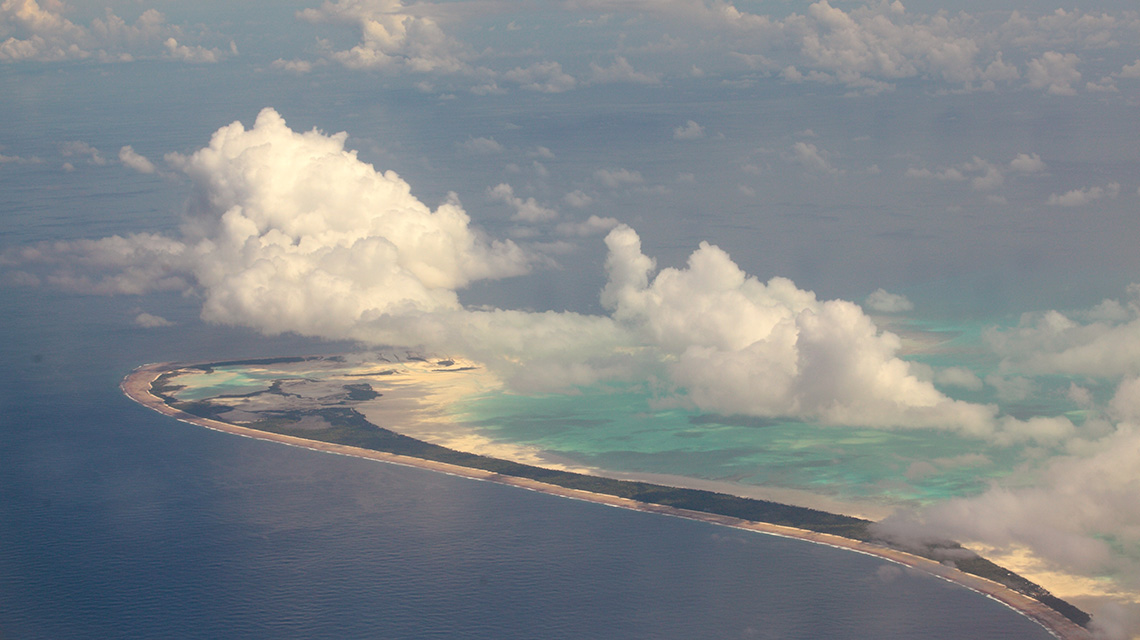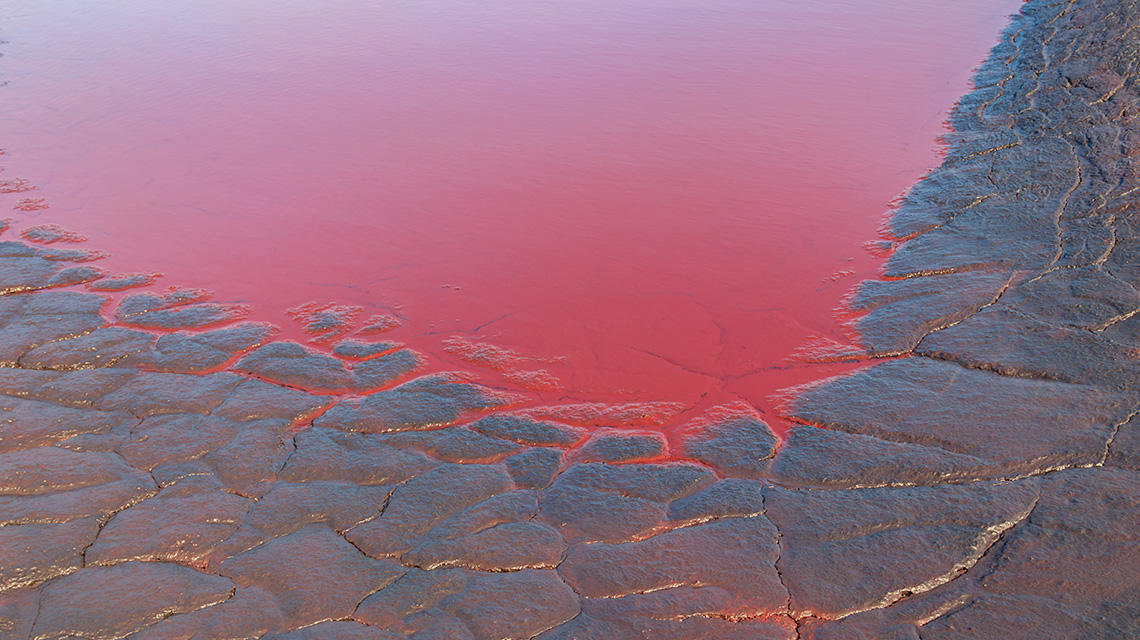Minds On
Effects of natural source extraction
Let’s consider some short-term and long-term effects of natural resource extraction.
Press Definitions to learn about short- and long-term effects.
Student Success
Think-Pair-Share
Take a moment to reflect on the following questions. If possible, share your thoughts and ideas with others.
- What are some effects of extracting resources on the environment?
- What do you believe to be the most important issue affecting the natural environment today?
Note to teachers: See your teacher guide for collaboration tools, ideas and suggestions.
Action
Task 1: Effects of resource extraction and harvesting
There are many short-term and long-term effects of extraction/harvesting of natural resources. The need and demand for consumer products and the world’s growing population of approximately 7.9 billion human beings remain the driving force behind the extraction/harvesting.
The short-term and long-term effects of resource extraction are becoming more urgent. The long-term effects of natural resource extraction and harvesting include soil erosion, desertification, smog, acid rain, climate change, soil contamination, and habitat destruction. Long-term effects are deeply connected with short-term effects.

Let’s consider the short-term and long-term effects of several types of resource extraction/harvesting.
Deforestation
Deforestation is the clearing of forests for the timber trade and to create land for agriculture and settlements, among other reasons. Forests release oxygen into the atmosphere and balance greenhouse effects. However, timber is used to make many of the products consumed by humans, including furniture and in the construction of buildings. The impact of deforestation to meet the timber demand in the world has a great impact on the environment and socially. Deforestation also occurs in the process of mining and fracking.
Two of the greatest effects of deforestation are soil erosion and increased flooding.
Press the following titles to reveal more information about the effects of deforestation.
Soil erosion occurs when soil is unable to produce vegetation or crops and hold water due to deforestation. The short-term effects include the loss of forest and the inability of the land to produce vegetation. The long term-effects can be the loss of Indigenous hunting and farming land, a change in the local ecosystem as animals lose their habitat, and the risk of increased flooding.
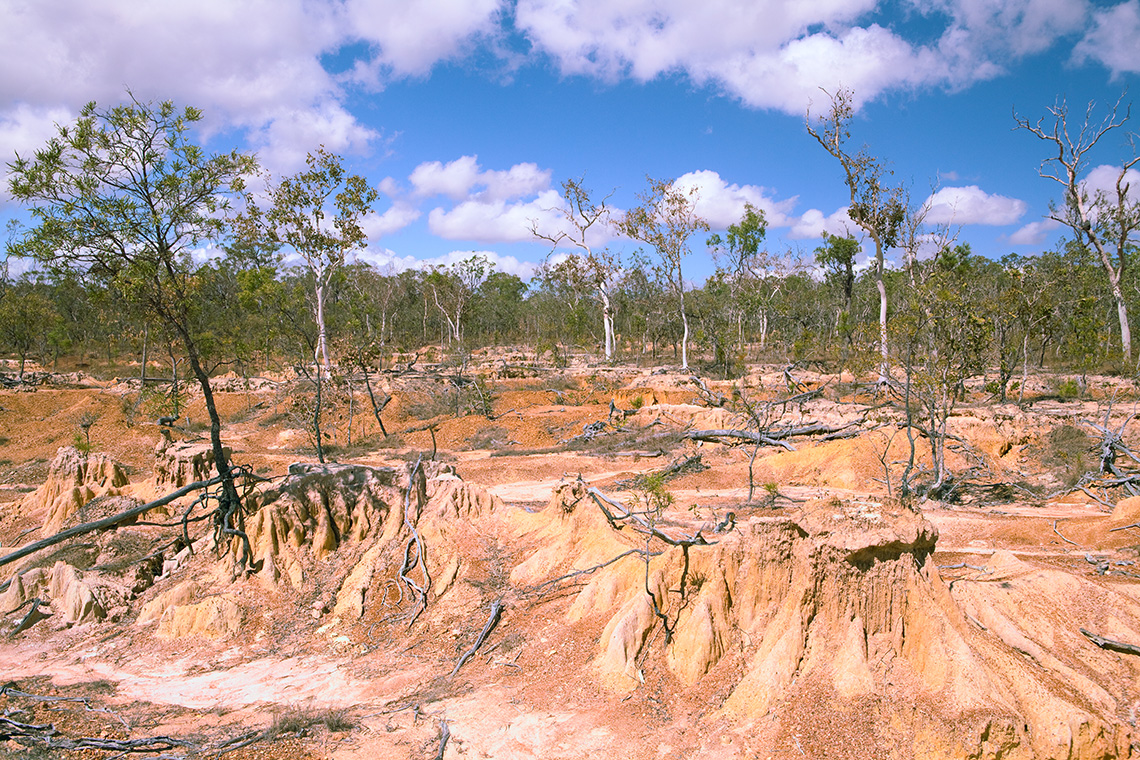
Image of soil erosion. The image shows dirt with exposed tree roots it on the side on a slope. Green grass surrounds the dirt filled area and think forest is shown in the background.
As a result of soil erosion, there is an increased risk of flooding due to the inability of the soil to hold nutrients. Although flooding may be a short-term or immediate problem, it stems from the long-term effects of soil erosion. Increased flooding can lead to long-term effects by changing the landscape of a forest region leading to the depletion of the forest, which in turn can impact the hunting and farming practices and settlements of Indigenous peoples living in the region.
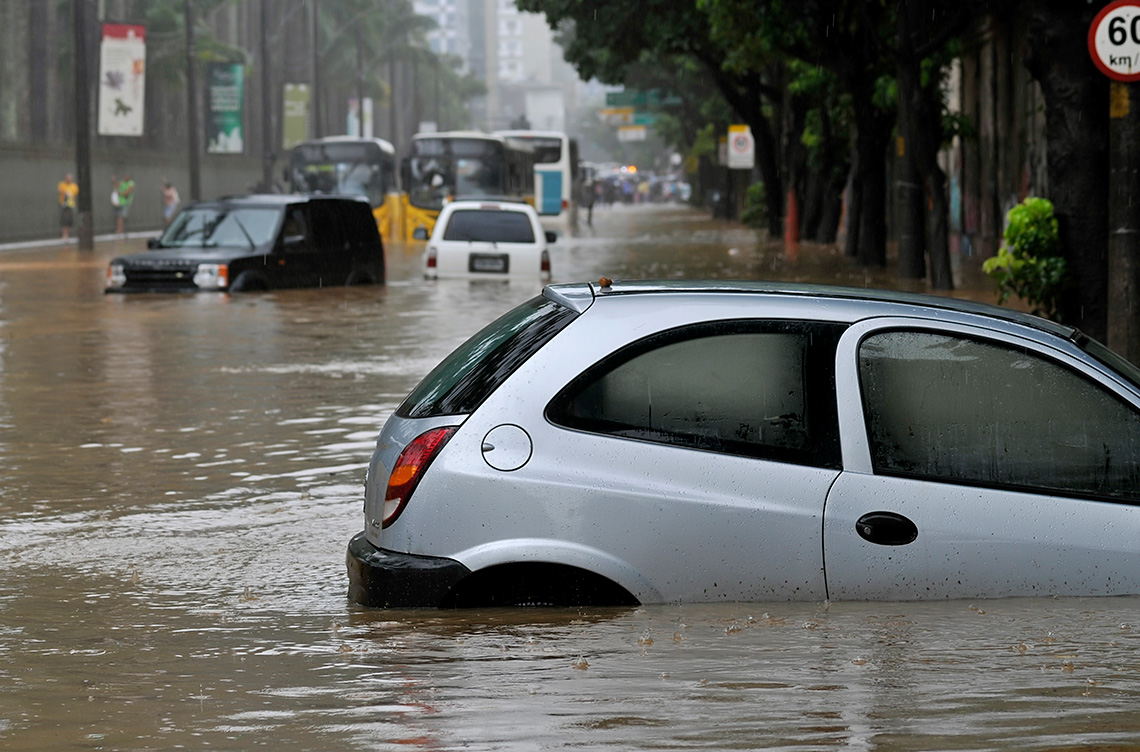
This image was taken in Indonesia and shows flooding of the highways due to deforestation. This image has two vans driving through water that is higher than their tire well. It also shows that the bottom portion of the tree line is completely underwater.
Over farming and climate change
Over farming refers to the practice of excessively cultivating land so that the soil becomes degraded and its productivity and yield (how much is produced) is reduced. Over farming and overgrazing of livestock, in combination with rising temperatures based on climate change, are each effects that lead to desertification and drought.
Press on the following titles to reveal more information about the effects of over farming and climate change.
Desertification is the process by which fertile ground becomes infertile. The short-term effects include a loss of agriculture and productive land. Long–term effects can include a loss of livelihood for local farmers and access to food and the potential to have to move to another area.
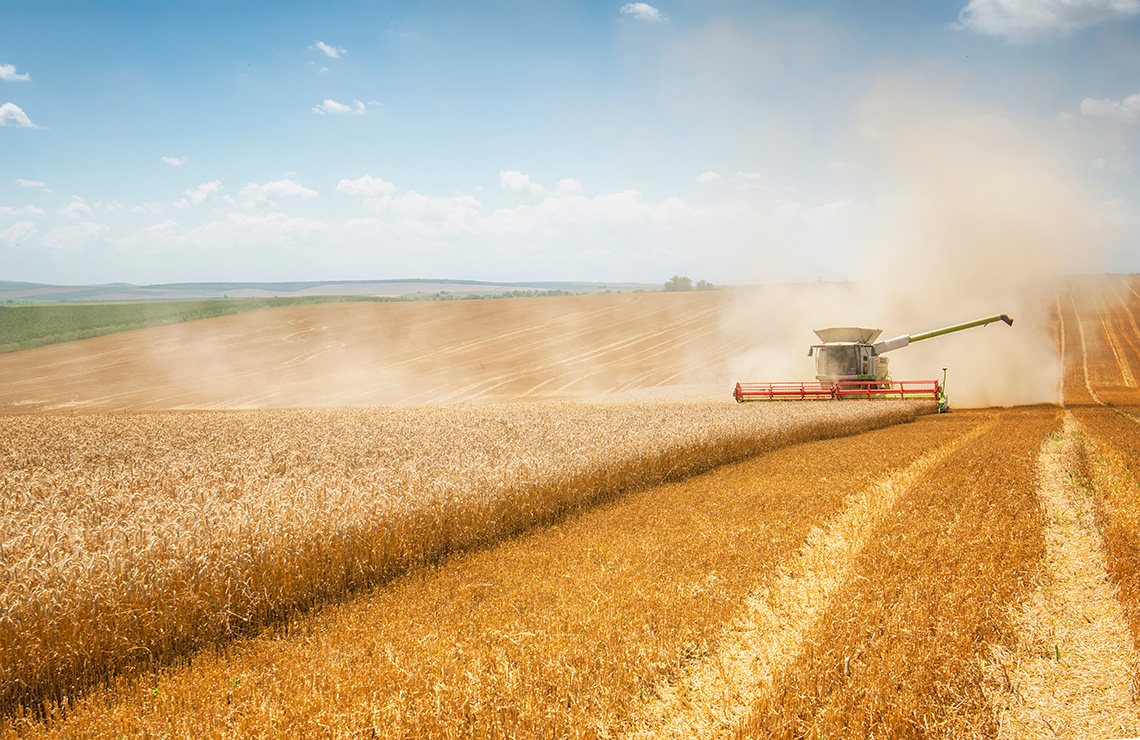
The image shows the impact of desertification on farming. A crop machine is driving through a flat field of soil in an arid and dry environment.
Drought is a period with abnormally low levels of rain leading to a lack of water supply. This is increasingly a result of changing weather patterns due to climate change. The short-term effects are a lack of access to drinking water and food, farmers’ crops can be ruined leading to economic loss, and people can be displaced or have to move to another region in search of food and water. Long-term effects can include the permanent removal of people from one region to another, the inability in a region to produce food and have access to drinking water, and political instability as different groups struggle to control access to resources for survival.
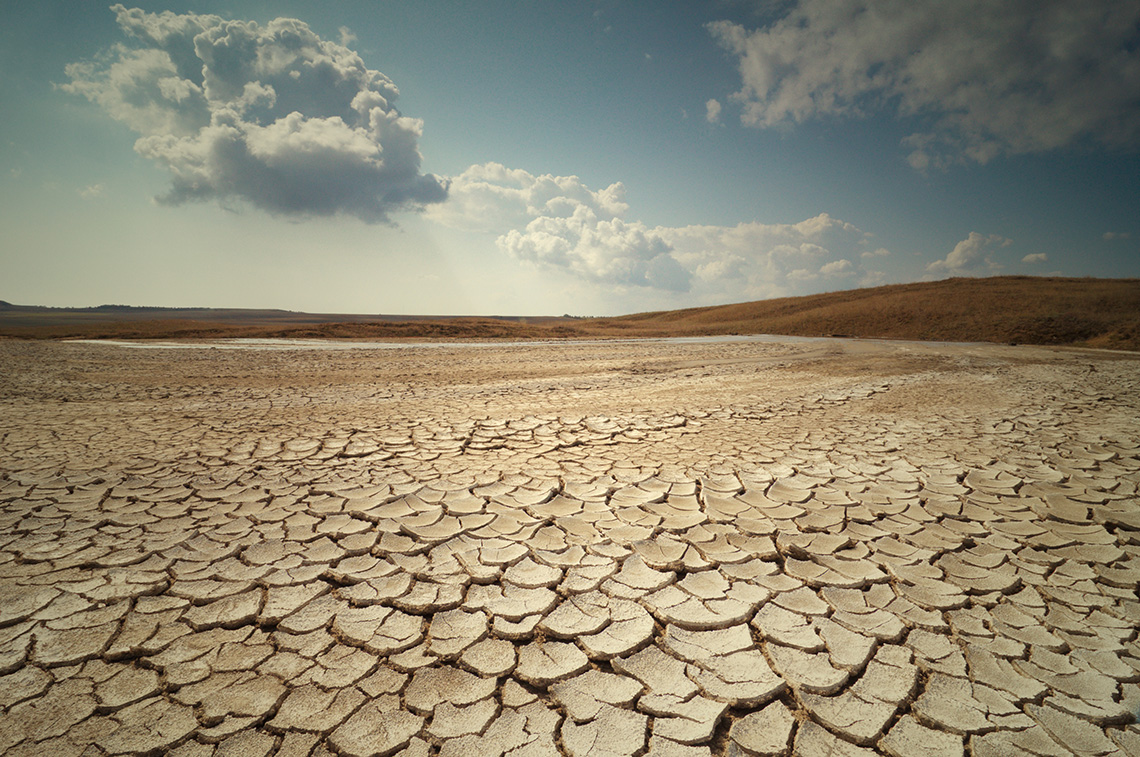
Overfishing and harvesting
Press on the following titles to reveal more information about overfishing and harvesting crops.
Overfishing has led to the depletion of some species of fish. In some cases, overfishing leads to the use of artificial means, such as hormones or steroids, to grow larger fish and and to encourage the reproduction of fish. These can be harmful to humans and animals and is quite common in harvesting fisheries. The short-term effects of overfishing include the decrease of a fish population in a certain area, while the long-term effects can be extinction, a disruption in the food chain, and health problems in humans due to the increased use of hormones and steroids in fish farming.
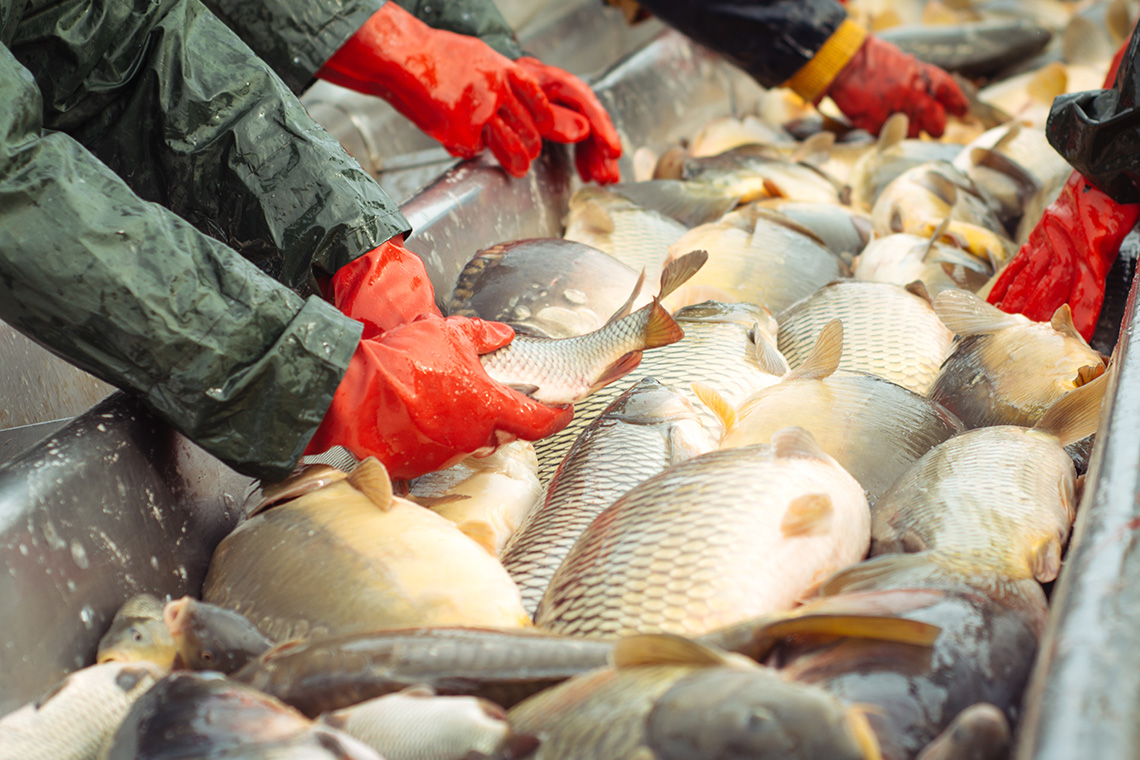
This is an image that shows the sorting of salt water fish. There are gloved hands reaching into a large container of fish and inspecting the exterior of the bodies.
Harvesting crops with chemicals can increase output but also put humans at risk for health problems due to the use of chemical fertilizers and genetic modifications. The increased demand in crops based on rising populations, the need for food, and increased energy needs have led to an increased use of land for agriculture globally. The short-term effects of harvesting mass-produced crops can lead to overuse of the soil, while the long-term effects can lead to the land being degraded and underproductive, which can lead to economic loss and take a long time for the land to recover its fertility.
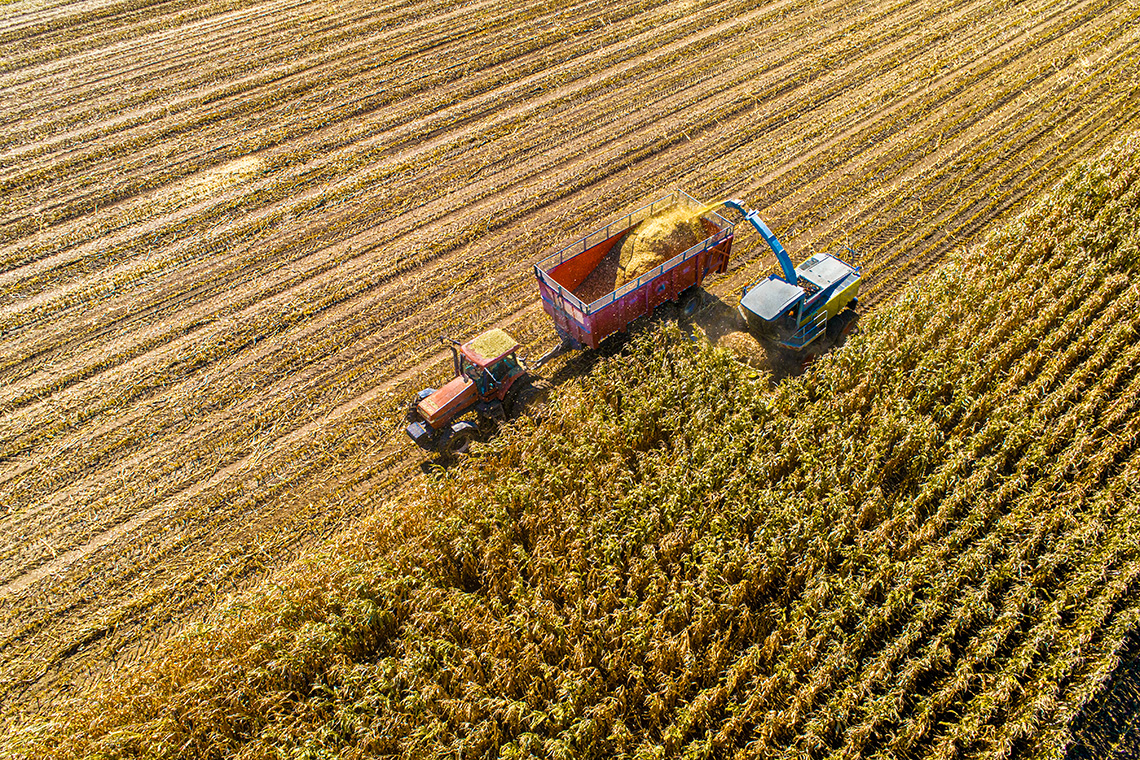
The image shows a machine harvesting crops. The grey machine with a red roof is cutting the crops line by line with the completed section done on the left and the incomplete section done on the right.
Mining
The degradation of soil can occur due to human activities including mining. Toxic elements such as mercury, which separates gold from mud, can wash into streams, contaminating soil and the wider ecosystem. Short-term effects may include a loss in the population of local fish, other species and marine vegetation, while long-term effects can include the poisoning of the drinking water of local populations and the extinction of local species.
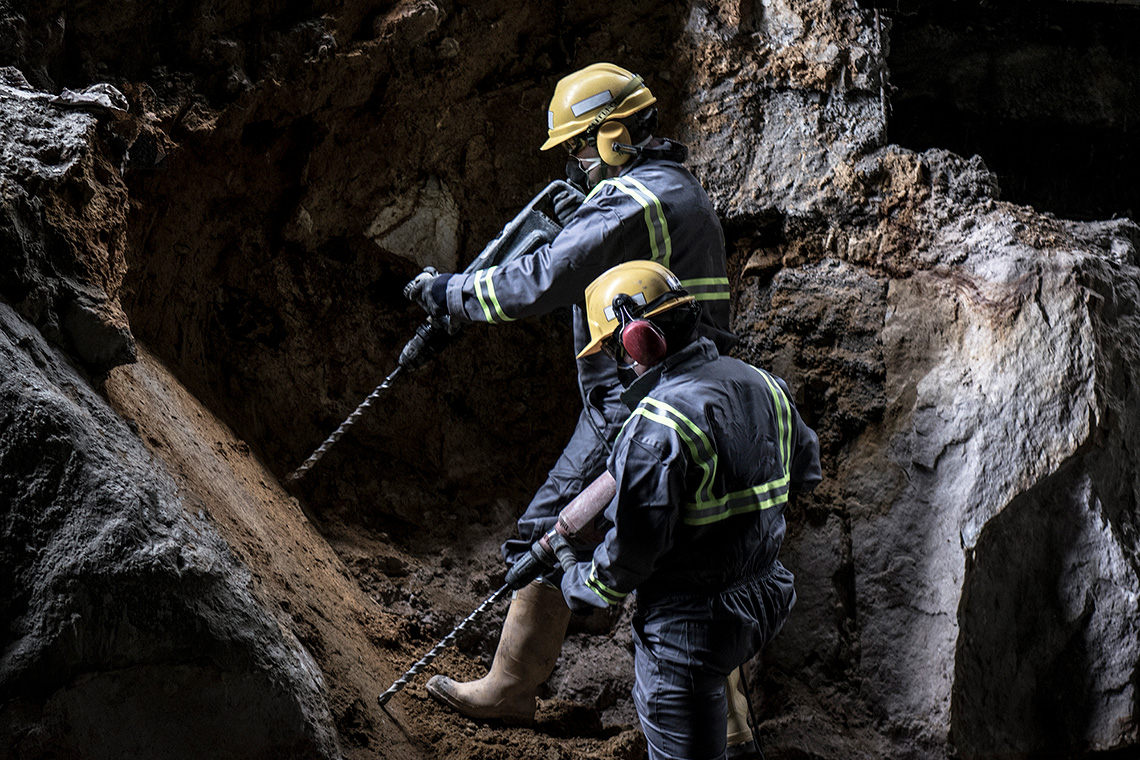
This is an image of two men holding large drills that are aiming the ends of their equipment into the ground.
Burning fossil fuels and climate change
Press on the following titles to reveal more information about the effects of burning fossil fuels.
Acid rain is a form of rain with acidic components, which harms plants, animals, rivers, and lakes. It is made acidic by pollution in the atmosphere, mainly caused by the industrial burning fossil fuels such as coal, which form acids after combining with atmospheric water. Short-term effects include the loss of fertility among fish and decreased growth. Long-term effects can lead to extinction of local species, which in turn can affect the entire ecosystem.

The image shows how acid rain is formed. Smoke and chemicals from a processing plant is shown going into the air with an arrow pointing to the sky and one to the ground. The arrow points across a river and shows how the acid rain falls in other locations and in this case over mountains, lakes and a forest showing the long-range impact on ecosystems.
One of the major effects of burning fossil fuels is the increased carbon dioxide in the atmosphere, which has led to an increase in global temperatures. The melting of glaciers and shelfs in the Arctic and Antarctica has resulted in rising sea levels.
Kiribati in the South Pacific has experienced a severe loss of coastline. Houses have had to be raised on stilts and rising seawaters threaten to flood all of the remaining land, meaning crops and foodstuffs will not be able to grow and the freshwater supply is under threat of contamination.
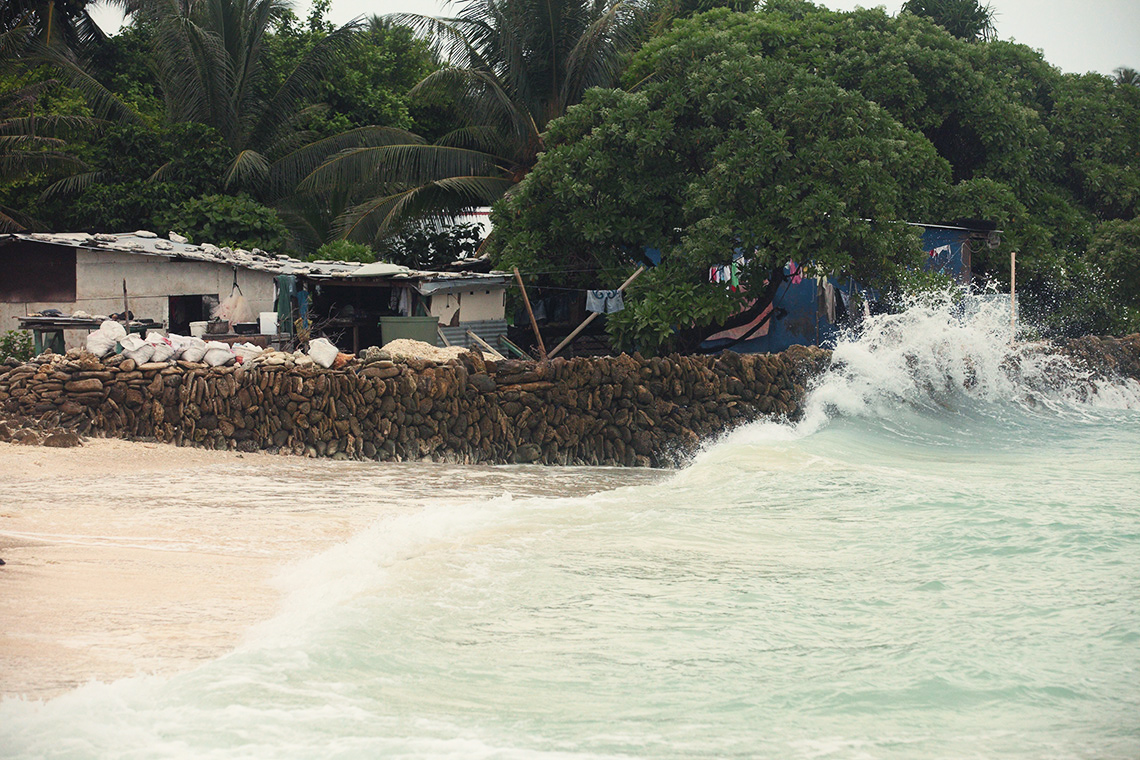
The image shows the impact of rising seawaters on communities in Kiribati in the South Pacific. A person is shown sitting on a cement block beside their property and buildings that are partially underwater and one that is on stilts but is almost as high as the floor of the home.
Consolidate your knowledge on effects of resource extraction
Besides Kiribati, there are many regions of the world under threat from rising sea levels, including Bangkok, Venice, Miami, New York City, and the entire nations of the Maldives and Bangladesh.
Now that we have reflected on the short-term and long-term effects of resource extractions, including extraction, harvesting, and the effects of climate change, you are going to create an awareness campaign about the effects of resource extraction on Indigenous peoples. Using a method of your choice, create a poster, digital presentation, or oral presentation on the serious short-term or long-term effects of one chosen resource extraction on Indigenous peoples.
Select the correct answer.
Connections
Connections
Which form of extraction or harvesting do you think has the biggest impact on local communities? Why?
Task 2: Effect of resource extraction on Indigenous people
Natural resource extraction impacts Indigenous peoples across Canada. Let’s consider the impact of logging in Ontario.
The demand for timber in construction, furniture and paper has led to increased deforestation globally and in Canada. Overtime, the depletion of forests has led to the alteration and in some cases a loss of land and territory for First Nations people. Pulp and paper industry, which is a subsector of forestry, has also resulted in mercury poisoning of land, water, and people. It has affected ecosystems and wildlife deeply connected with traditional Indigenous ways of life and contributed to the marginalization of Indigenous peoples in Canada.
Logging and First Nations in Ontario
Asubpeeschoseewagong First Nation, also known as Grassy Narrows, is an Anishinaabe community 80 km north of Kenora, Ontario. Grassy Narrows territory occupies approximately 4,000 square kilometers within the Boreal Forest. Their territory consists of many lakes and rivers. The forest is abundant with different types of wildlife: moose, deer, martens, rabbits, beaver, foxes, wolves, bears, eagles, and various birds. For generations the land provided the community with their spiritual, physical, emotional and economic needs; hunting, trapping, fishing and harvesting of plants, medicines and berries continue to be of vital importance to the community. Despite the importance of the forest, approximately 50% of Grassy Narrows traditional land has been logged.
As we work towards Truth and Reconciliation, information about lands and territories is constantly being updated. This map was accessed through the permission terms of TVO Today in July 2021.
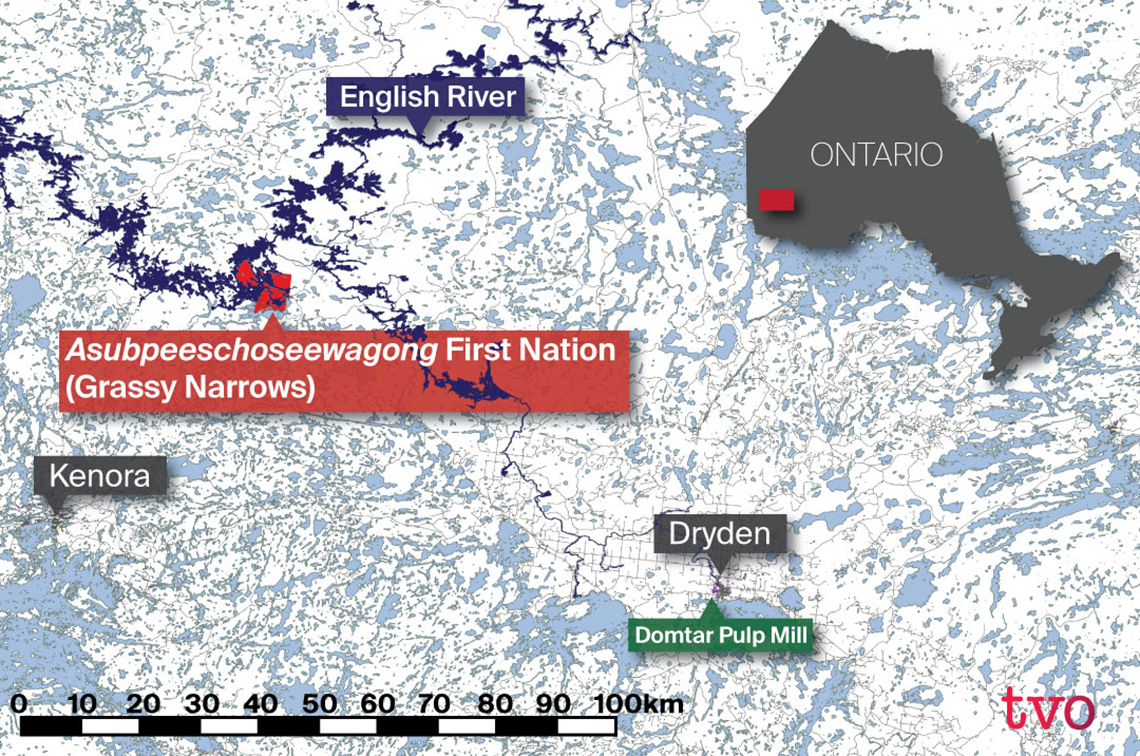
The image shows the location of Grassy Narrows First Nation as well as the location of the Domtar Pulp Mill in Northern Ontario.
Virtually overnight, logging companies clearcut forests using industrial techniques. The clearcutting destroys trap lines, eliminates berry, and medicine patches, damages the soils, and disrupts wildlife populations and game animals, all essential to First Nations communities. After logging, companies spray the land with herbicides and then plant tree farms. The tree farms contain only one type of tree and are devoid of the berry bushes and plants traditionally used for medicinal purposes. Without healthy forests, much of the wildlife is also disappearing, making it difficult for the Grassy Narrows people to continue hunting and trapping on their traditional land, nor are they able to pick berries that are free of poisonous chemicals.
Not only has their traditional life and livelihood been threatened by clearcutting, but Grassy Narrows First Nation have also suffered from mercury poisoning, a byproduct of the Pulp and Paper industry.
Between 1962 and 1970, the Dryden Chemicals pulp and paper mill dumped 9,000 kg of untreated mercury into the English-Wabigoon river system, upstream from Grassy Narrows. The mercury contaminated the fish populations, which were an important food source and commercial industry for Grassy Narrows First Nation. In 2016, a report found that more than 90 percent of residents in Grassy Narrows First Nations have symptoms of mercury poisoning, including permanent impairment of speech, sight, and hearing, as well as convulsions and loss of balance, cancer, and ALS.

In 2002, the people of Grassy Narrows First Nation built a blockade to stop clearcut logging in their territory. Young people of Grassy Narrows stood in front of logging trucks to prevent them from accessing their land and the forests. The blockade continues to be in effect; however, the Ontario government insists it will resume logging of the Boreal Forest in 2022. Despite the many attempts by governmental organizations and companies to extract resources, Grassy Narrows First Nation maintains a relationship with the land and their culture.
Check out the following article "Does Logging on First Nations Land Violate the Charter?" to learn more about the Grassy Narrows First Nation’s connection to the land.
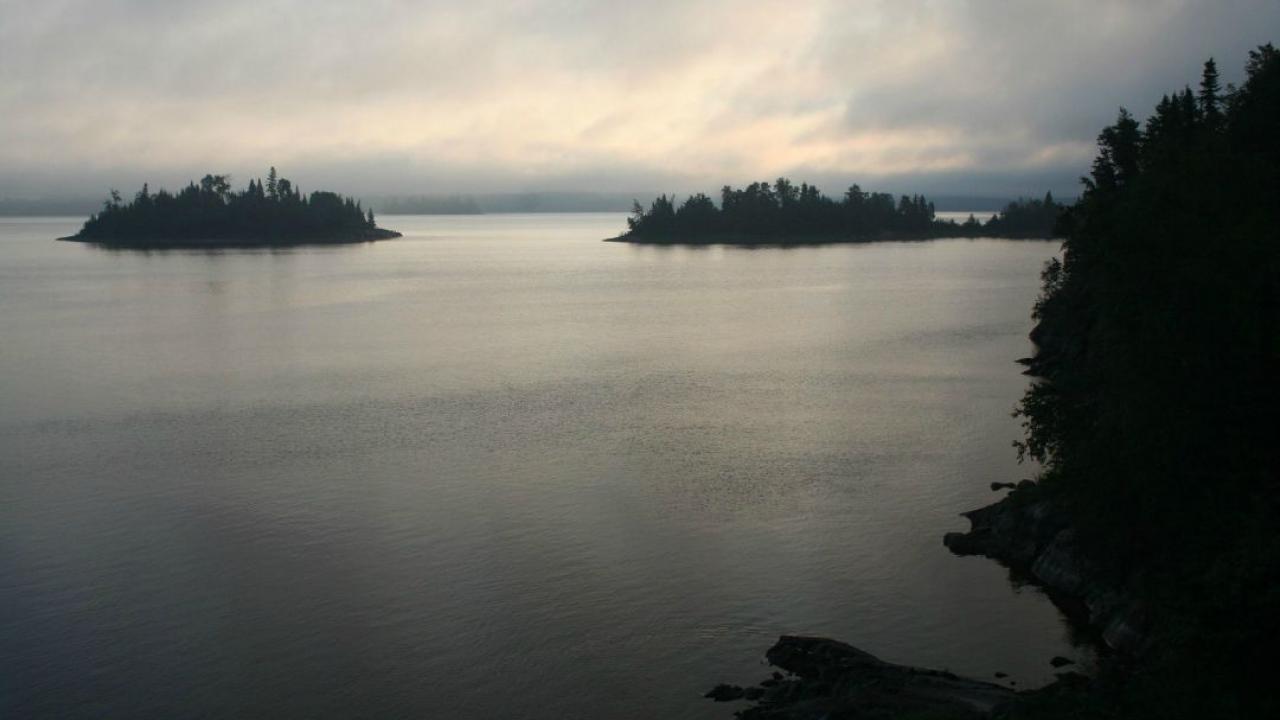
Press tvo today to access "Does Logging on First Nations Land Violate the Charter?"
tvo today (Opens in a new tab)Source: Grassy Narrows.net: https://freegrassy.net/learn-more/the-boreal-forest/
Source: Canadian Encyclopedia https://www.thecanadianencyclopedia.ca/en/article/grassy-narrows
Source: Kitts, Daniel. “Does logging on First Nations land violate the Charter?” Published on Sep 21, 2015 TVO https://www.tvo.org/article/does-logging-on-first-nations-land-violate-the-charter
Source: CBC News https://www.cbc.ca/news/canada/thunder-bay/grassy-narrows-health-report-release-1.467509
After exploring the previous passages and the article, use Impact of Logging Organizer ( Impact of Logging Organizer in bold) or a method of your choice to record the environmental, social, and economic impact of logging on the Grassy Narrows First Nation.
Complete the Impact of Logging Organizer in your notebook or using the following fillable and printable document.
|
Category |
Impact |
|
Environmental |
|
|
Social |
|
|
Economic |
Press the ‘Activity’ button to access Impact of Logging Organizer.
Connections
Connections
How can the Grassy Narrows First Nation’s experience stand as an example for other Indigenous peoples facing similar struggles?
Consolidation
Short-term and long-term effects
Now that we have explored the short-term and long-term effects of extraction, harvesting, and the effects of climate change on communities and the environment, complete the following fill in the blank activity by selecting the missing words.

Now that we have reflected on the short-term and long-term effects of extraction, harvesting, and the effects of climate change, using a method of your choice create a poster, digital presentation or oral presentation on their serious short-term or long-term effects on Indigenous peoples.
Be sure to use the following interactive checklist while completing the activity. Record your responses to all questions in the checklist using a method of your choice.
Effects on Indigenous Peoples Poster Checklist
Questions to ask about the resource:
Indigenous focus:
Reflection
As you read the following descriptions, select the one that best describes your current understanding of the learning in this activity. Press the corresponding button once you have made your choice.
I feel...
Now, expand on your ideas by recording your thoughts using a voice recorder, speech-to-text, or writing tool.
When you review your notes on this learning activity later, reflect on whether you would select a different description based on your further review of the material in this learning activity.
Press ‘Discover More’ to extend your skills.
Discover MoreGiven what we have learned about the impact of human activity on the natural environment, select one of the following types of resource extraction that is affecting Indigenous peoples.
Research the impact of extraction on Indigenous lands and people and the solutions First Nations, Métis, and/or Inuit have developed to protect and replenish natural resources.
Complete the Extraction Solutions Organizer in your notebook or use the following fillable and printable document.
| Extraction/Harvesting | First Nations, Métis, or Inuit People (Nation and Location) | Solutions |
|---|---|---|
| Logging/forestry | ||
| Fisheries | ||
| Oil and Natural Gas |
Press the ‘Activity’ button to access Extraction Solutions Organizer.
